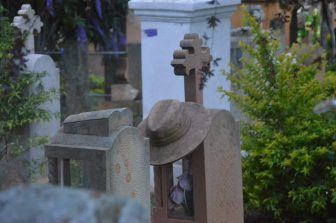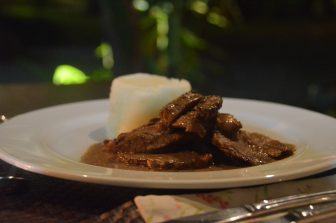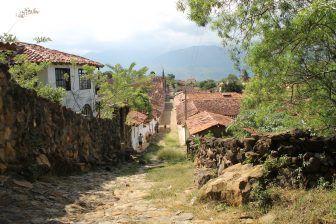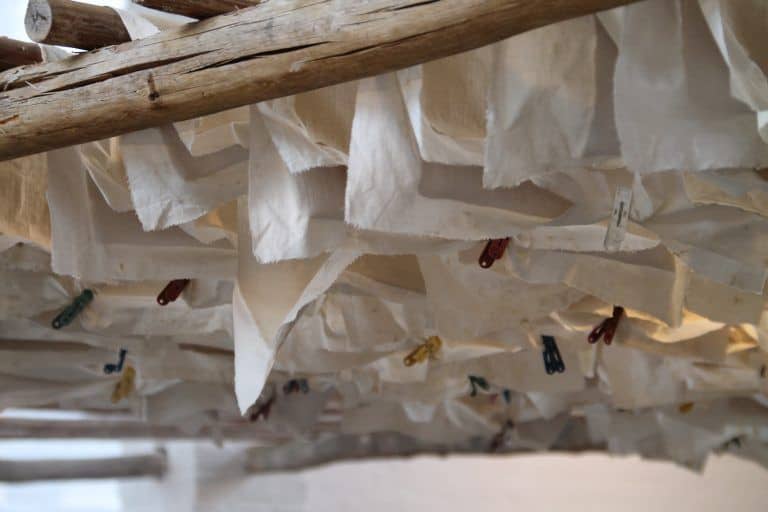
[ Dec.2016 ] On the day we walked from Barichara to Guane village in Colombia, we had another tour in the afternoon.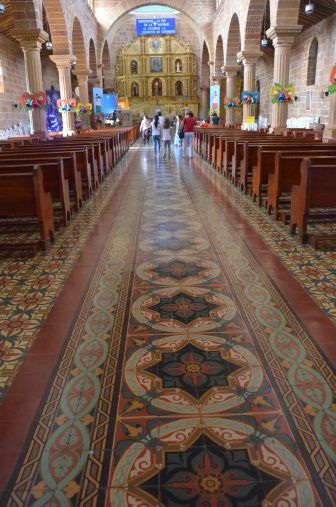
This time it was a cultural tour in Barichara with the same guide.
It was not included in our itinerary and we arranged it with our guide, Oswaldo, privately.
The fee was 80000 COP ( about 22 pounds or 25 euros ) for two of us, which was very reasonable.
First, we went into the cathedral in the centre of the town.
This was built in the 18th century, but it looked much newer, maybe because it was very well maintained.
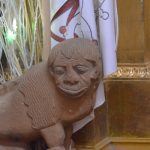
On the ceiling the bamboo was used like other residential houses.
There was a statue of an animal with the face of native person.
That is because the Spanish encouraged the locals to become Christian and looked down on those who would not convert.
After the cathedral, we visited a cultural school called Escuela Tierra de Artes.
They teach traditional handicrafts, cooking, music and so on free of charge.
How generous!
Oswaldo took a cooking course here in the past and Viviana, our interpreter took a weaving course and a pottery course.
They were growing vegetables on the site and they smelled strongly.
They planted citrus trees around the coffee trees so that the scent of citrus would be infused in the coffee beans.
We had a cup of Macchiato in the cafe there, but I could not sense the citrus smell.
Nonetheless it was a very tasty Macchiato which I had not had for a long time.
Oswaldo explained that they raise the money from the annexed shop which sells the products made in here and the restaurant within the site to run the school.
The owner of the school is apparently the wife of a former president, so maybe they get some more funds from somewhere.
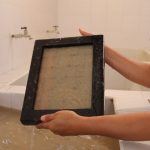
Its long name was Fundacion San Lorenzo de Barichara.
A worker there demonstrated and explained the process of making paper using Fique which was the plant we saw during our walk in the morning, banana plant, another plant called ‘the voice of mother in law’, and so on.
We tried a bit ourselves, too, which was a fun.
It is a fashionable place for a countryside town and the things they were selling in the shop were nice.
After we left there, Oswaldo went into a local grocery shop and we followed feeling puzzled.
He wanted to show us bars of chocolate they were selling.
He said that the cacao beans from here in Santander Department were exported to Belgium and famous Belgian chocolate was made from them.
We bought a couple of bars to eat during our travelling, which tasted good but a bit more powdery than the ones in Belgium.
Then we visited a graveyard and saw interesting gravestones.
I saw some hats carved in stones, which used to be worn by the person in the grave.
There also were buses carved on the gravestone of a bus driver, and football for the football fan and so on.
This reminded me of another graveyard called Merry Cemetery in Romania I visited long time ago.
The time passed fast and it became dark.
It was really a full satisfactory day.

